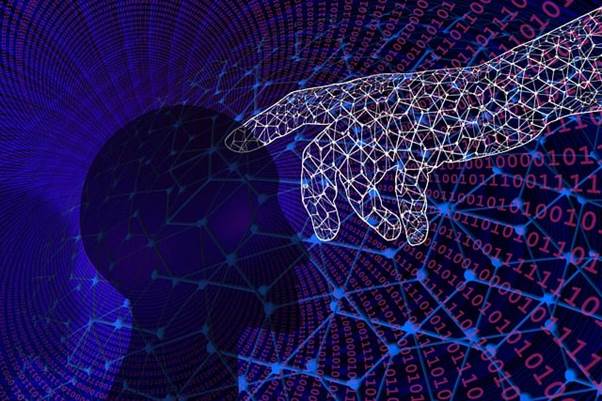The human nervous system is a marvel of biological engineering, enabling the brain and body to communicate seamlessly. At the core of this communication system are the Spinal pathways, which serve as vital channels for transmitting sensory information from the body to the brain and motor commands from the brain to the body. Without these intricate networks, movement, sensation, and reflexes would not be possible. Understanding Spinal pathways not only provides insight into normal body function but also helps in diagnosing and treating neurological disorders.

What Are Spinal Pathways?
Spinal pathways are bundles of nerve fibers within the spinal cord that carry information between the brain and the rest of the body. They can be broadly divided into two types: ascending pathways, which transmit sensory information to the brain, and descending pathways, which deliver motor commands from the brain to muscles and organs. The efficiency and precision of these pathways make it possible for humans to react quickly to stimuli, maintain posture, and perform complex voluntary movements.
Ascending Spinal Pathways
Ascending Spinal pathways are responsible for transmitting sensory information such as touch, pain, temperature, and proprioception (the sense of body position). Key ascending tracts include:
- Dorsal column–medial lemniscal pathway: Carries fine touch, vibration, and proprioceptive information.
- Spinothalamic tract: Transmits pain, temperature, and crude touch.
- Spinocerebellar tract: Sends information about muscle activity to the cerebellum for coordination.
These Spinal pathways ensure that the brain receives accurate input from the environment, allowing individuals to make informed decisions and adjust their actions accordingly.
Descending Spinal Pathways
While ascending tracts carry sensory data upward, descending Spinal pathways deliver motor instructions downward. These pathways are essential for voluntary movement, balance, and reflex control. Major descending tracts include:
- Corticospinal tract: Directs voluntary motor control of skeletal muscles.
- Vestibulospinal tract: Helps maintain posture and balance.
- Reticulospinal tract: Influences reflexes and muscle tone.
The coordinated activity of these Spinal pathways allows humans to walk, run, grasp objects, and perform countless other movements with remarkable precision.
The Role of Spinal Pathways in Reflexes
One of the most remarkable features of Spinal pathways is their involvement in reflexes. Reflex actions, such as quickly withdrawing your hand from a hot surface, occur without conscious thought because the spinal cord processes the information directly. While the brain eventually becomes aware of the event, the immediate protective response is mediated by Spinal pathways, ensuring survival by reducing reaction time.
Clinical Importance of Spinal Pathways
Damage to Spinal pathways can have profound effects on a person’s mobility and sensory perception. Injuries to the spinal cord, for example, may result in paralysis, loss of sensation, or impaired reflexes depending on the location and severity of the damage. Conditions such as multiple sclerosis, amyotrophic lateral sclerosis (ALS), and spinal cord injuries disrupt normal signaling, highlighting the crucial role of Spinal pathways in maintaining health. Understanding these networks allows doctors and researchers to develop better treatments and rehabilitation strategies.
Advances in Studying Spinal Pathways
Modern technology has greatly expanded our knowledge of Spinal pathways. Imaging techniques such as magnetic resonance imaging (MRI) and diffusion tensor imaging (DTI) allow scientists to map these networks in detail. Electrophysiological studies also help in recording nerve activity to understand how signals travel through the spinal cord. These advances are not only improving diagnosis but also paving the way for innovative treatments such as spinal cord stimulation and regenerative therapies aimed at repairing damaged Spinal pathways.

Rehabilitation and Neuroplasticity
One of the most promising areas of research involves neuroplasticity the ability of the nervous system to adapt and reorganize. Even after injury, Spinal pathways may develop alternative routes to restore partial function. Rehabilitation programs, physical therapy, and advanced technologies like robotic exoskeletons are helping patients regain mobility by strengthening existing pathways or creating new ones. These approaches highlight the resilience of the nervous system and the potential for recovery even after severe injury.
Spinal Pathways and Everyday Life
Though often unnoticed, Spinal pathways are constantly at work in everyday life. From the moment you wake up, they allow you to feel the texture of your bedsheets, sense the temperature of your surroundings, and move your body with precision. When you walk, run, or even maintain your balance while standing, descending and ascending pathways collaborate seamlessly. The smooth coordination of Spinal pathways is what allows humans to interact effectively with their environment and maintain independence in daily activities.
The Future of Spinal Pathways Research
Looking ahead, the study of Spinal pathways holds immense promise for medicine and technology. Scientists are exploring stem cell therapies and bioengineered scaffolds to repair damaged spinal cords. Brain-computer interfaces, which interpret neural signals, may bypass damaged pathways altogether, giving patients with paralysis the ability to control prosthetic limbs or communicate through thought. As research progresses, treatments aimed at enhancing or restoring Spinal pathways may transform the future of neurological care.
Conclusion
In conclusion, Spinal pathways are the critical highways of the nervous system, responsible for connecting the brain with the body and enabling movement, sensation, and reflexes. They not only allow for basic survival functions but also support complex behaviors and daily activities. When functioning properly, Spinal pathways ensure seamless communication and adaptability; when disrupted, they present serious medical challenges. Advances in neuroscience, rehabilitation, and technology are opening new possibilities for healing and recovery. As research continues, our understanding of Spinal pathways will remain central to unlocking the mysteries of human movement and perception.